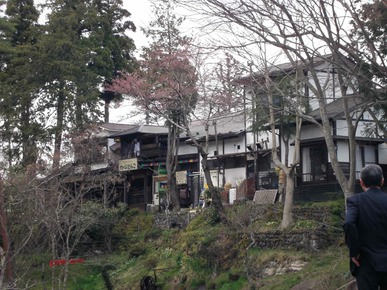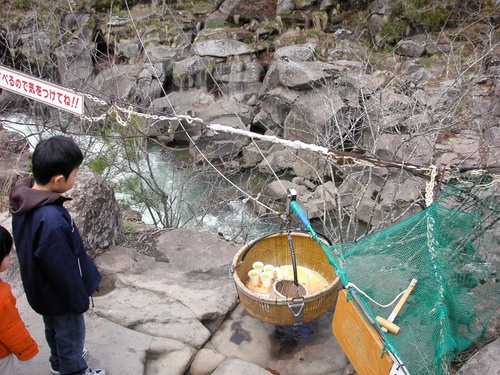
Neither of us was any the wiser when our host kneel down, place some money in a small basket and use a wooden mallet to tap a wooden object (twice). The basket, attached to a device resembling the flying fox familiar to Boy Scouts the world over, then zoomed across the river to a small shelter high on the opposite bank, returning a few moments later filled with a double serve of what I assumed were the dumplings and green tea.

The dumplings were actually dungo, a dough made from rice flour and water, rolled into a ball, boiled, grilled and served, three to a stick, dunked in sweet sticky soy sauce, red bean paste with sugar and soy sauce with mirin.
Personally I found them an acquired taste and one which I have, to date, failed to acquire but the green tea went down well in the cold conditions.
From there, once we were back in the car, we headed off across country, pausing to look at a Buddha face etched into a stone cliff before arriving at Motsuji, a recreation of a temple complex near Mount Toyama.
The main feature of the site is a garden from the Heian Period (794 - 1192). The site itself dates back to 850 and grew to an enormous complex with more than five hundred dormitories for monks spread around more than forty places of worship before fires destroyed the original buildings. One building on the site, Jogyoda Hall, was reconstructed in 1732, but most of the current buildings on the site are much more recent.
The fires, however, did not destroy the Pure Land Garden which surrounds the large pond which is the real centre-piece of the site and is the venue for various festivals and ritual observances in January and May each year.